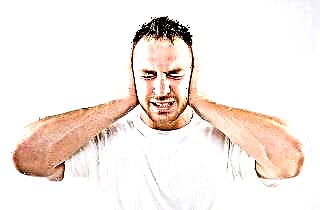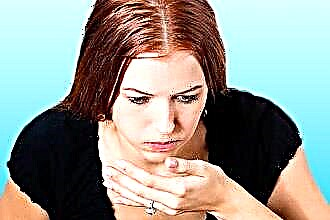 Treatment of pharyngotracheitis is accompanied by the intake of antiviral and antimicrobial agents, as well as local antiseptics. Systemic and local therapy is the key to successful and rapid destruction of the pathogenic flora in the pharynx and trachea. An integrated approach to the treatment of infectious diseases allows you to eliminate the manifestations of pharyngotracheitis within 5-6 days and prevent the chronicization of inflammation in the mucous membranes.
Treatment of pharyngotracheitis is accompanied by the intake of antiviral and antimicrobial agents, as well as local antiseptics. Systemic and local therapy is the key to successful and rapid destruction of the pathogenic flora in the pharynx and trachea. An integrated approach to the treatment of infectious diseases allows you to eliminate the manifestations of pharyngotracheitis within 5-6 days and prevent the chronicization of inflammation in the mucous membranes.
To speed up the recovery of the affected tissues, it is recommended to perform inhalation and gargling with local antibiotics, antiseptics and anti-inflammatory solutions.
Symptomatic picture
As a rule, the development of pharyngotracheitis is facilitated by a decrease in the body's immune defenses. In some cases, the disease acts as a complication of influenza, acute respiratory viral infections, colds transferred "on the legs", etc. The foci of chronic inflammation located in the throat and nasal cavity can contribute to the reproduction of pathogenic flora in the pharynx and trachea. Therefore, pharyngotracheitis is often preceded by chronic rhinitis, laryngitis, tonsillitis and pharyngitis.
The clinical picture is represented by typical manifestations of tracheitis and pharyngitis:
- spastic cough;
- hoarseness of voice;
- burning sensation in the throat;
- temperature increase;
- noisy breathing (stridor);
- nasal congestion;
- chest pain (after coughing);
- enlarged lymph nodes;
- redness of the throat;
- looseness of the mucous membranes of the oropharynx.
Coughing fits, nasal congestion and subfebrile condition are the first signs of pharyngotracheitis development.
A sharp breath, dusty air, laughing or screaming can provoke a cough. Prolonged seizures, which are often worse at night, cause respiratory distress. The patient develops shortness of breath, difficulty breathing, and the skin becomes pale.
With extensive inflammation of the respiratory tract, there is a risk of developing stenosis of the larynx or pharynx. Therefore, when pathological signs appear, it is not recommended to self-medicate. Only after identifying the causative agent of the infection, the doctor will be able to draw up the correct treatment regimen that will help prevent complications.
Classification
The severity of clinical manifestations is determined by the form of the disease and the provoking factors that caused the inflammation. Pharyngotracheitis can be acute and chronic. If the disease develops suddenly and is accompanied by a severe cough, fever and sore throat, the patient is diagnosed with an acute form of the disease.
Untimely and ineffective treatment of acute pharyngotracheitis can cause chronicization of pathological processes. With a sluggish inflammation of the trachea and pharynx, the symptoms are not so pronounced. However, with hypothermia, hypovitaminosis and a sharp decrease in immunity, relapses of inflammation occur.
There are 3 types of pharyngotracheitis, which are determined by the degree of damage to the mucous membranes of the pharynx and trachea:
- catarrhal - characterized by redness and slight edema of the ciliated epithelium in the ENT organs;
- atrophic - dystrophic changes are observed in the tissues of the respiratory tract; the mucous membrane becomes thinner and crusts, which provoke irritation and coughing fits;
- hypertrophic - the ciliated epithelium slightly increases in size due to the expansion of blood vessels and swells; pathological processes in the mucous membrane stimulate the secretion of mucus in the trachea, resulting in a spastic wet cough.
The choice of drugs directly depends on the form of ENT disease. As a rule, a viral infection leads to catarrhal inflammation of the pharynx and trachea, which is treated with antiviral drugs. In turn, chronic forms of pathology are caused by bacterial inflammation, which can only be eliminated with antibiotics and local antiseptics.
Diagnostics and therapy methods
What medicines can be used to cure pharyngotracheitis? Treatment is determined by the causative agent of the infection and the severity of the inflammatory processes in the mucous membranes of the trachea and pharynx. To determine the type of pathogenic flora that caused the disease, the doctor must take a swab from the throat for microbiological analysis.
For the treatment of infectious diseases, the following types of drugs are used:
- antibacterial;
- antiviral;
- immunostimulating;
- antitussives;
- mucolytic;
- antiseptic.
As an auxiliary therapy, you can use folk remedies - anti-inflammatory infusions and decoctions for gargling. Unlike traditional medicines of symptomatic action, they do not contain any toxic substances that could negatively affect the functioning of the liver.
Some herbs, in particular chamomile, St. John's wort and oak bark, can provoke allergies, so it is recommended to consult an ENT doctor before using them.
Overview of pharmacy products
Etiotropic agents (antiviral, antibacterial) are the basis of drug treatment for pharyngotracheitis. They suppress the activity of the pathogenic flora and destroy pathogens that cause inflammation of the pharynx and trachea. To alleviate the patient's condition, symptomatic drugs are used that eliminate headaches, obsessive cough, sore throat, etc.
In the process of treating respiratory diseases, the following pharmaceutical medicines are usually used:
| Drug type | Drug name | Description |
|---|---|---|
| antimicrobial |
| destroy pathogenic bacteria and prevent the spread of infectious and allergic reactions; used to treat purulent and chronic pharyngotracheitis |
| antivirus |
| inhibit the activity of viruses and stop catarrhal inflammation of the mucous membranes of the respiratory tract |
| antitussives |
| suppress the cough reaction and eliminate bronchospasm, due to which dry and unproductive cough is stopped |
| expectorant |
| stimulate the liquefaction and excretion of mucus from the trachea and bronchi, have an anti-inflammatory effect on the tissues of the pharynx; |
| liquid probiotics |
| normalize the microflora in the intestine, increase general immunity and contribute to the destruction of pathogens |
| anti-inflammatory |
| reduce the severity of inflammation in the tissues, relieve swelling and pain |
| antipyretic |
| normalize the work of thermoregulation centers, thereby eliminating subfebrile and febrile fever |
Chronic forms of the disease are more difficult to treat due to the resistance of microbes to most antibiotics.
To surely eliminate inflammation in the pharynx and trachea, it is recommended to undergo a full course of antimicrobial and immunostimulating therapy, which lasts 14-21 days.
Inhalation
 Pharyngotracheitis is a disease that is accompanied by severe swelling of the mucous membranes of the airways.In order to quickly stop the inflammation and destroy the infection in the lesions, it is recommended to resort to inhalation. Nebulizers are the most suitable devices for the procedure, which convert the solution into an aerosol. Breathing aerosol 3-4 times a day, you can increase the medicinal substances in the tissues, thereby enhancing their effect and speeding up the healing process. Only room temperature solutions should be poured into the nebulizer chamber. The most commonly used remedies for pharyngotracheitis include:
Pharyngotracheitis is a disease that is accompanied by severe swelling of the mucous membranes of the airways.In order to quickly stop the inflammation and destroy the infection in the lesions, it is recommended to resort to inhalation. Nebulizers are the most suitable devices for the procedure, which convert the solution into an aerosol. Breathing aerosol 3-4 times a day, you can increase the medicinal substances in the tissues, thereby enhancing their effect and speeding up the healing process. Only room temperature solutions should be poured into the nebulizer chamber. The most commonly used remedies for pharyngotracheitis include:
- "Bioparox" - a local antibiotic that destroys microbes and eliminates inflammatory processes;
- "Sinekod" is an antitussive agent that helps to stop attacks of "barking" cough;
- "Erespal" is a medicinal solution with antiallergic, antiphlogistic and antitussive action;
- "Lazolvan" is an expectorant that accelerates the excretion of mucus from the tracheobronchial tree.
The duration of nebulizer therapy is on average 10-14 days. According to practical observations, cough and sore throat disappear completely within a few days after inhalation.
It is worth noting that antimicrobial agents can somewhat lower local immunity and even provoke dysbiosis. Therefore, the dosage of drugs, the frequency of procedures and the duration of therapy should be checked with the ENT doctor.
In the absence of temperature, steam inhalation with herbal decoctions can be carried out. water tank
The most pronounced anti-inflammatory and disinfecting properties are possessed by decoctions of chamomile, sage, calendula, thyme, linden, etc.
After the procedure, it is advisable not to go outside and not ventilate the room for 1.5-2 hours, as this can lead to hypothermia and exacerbation of inflammation.



